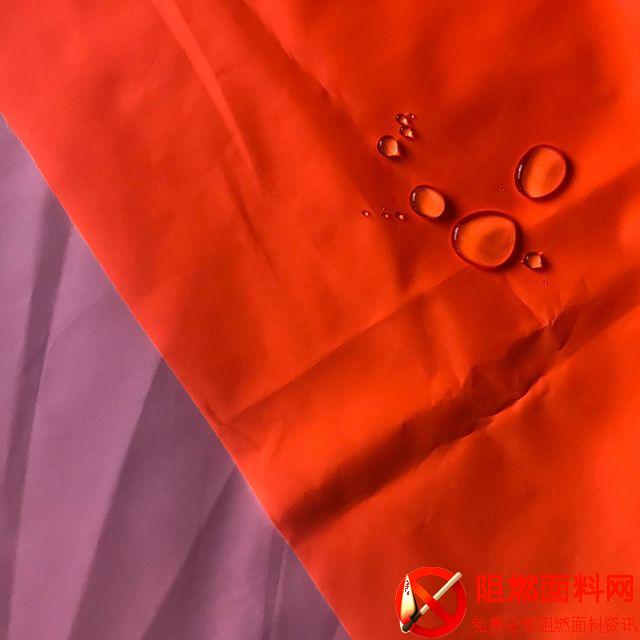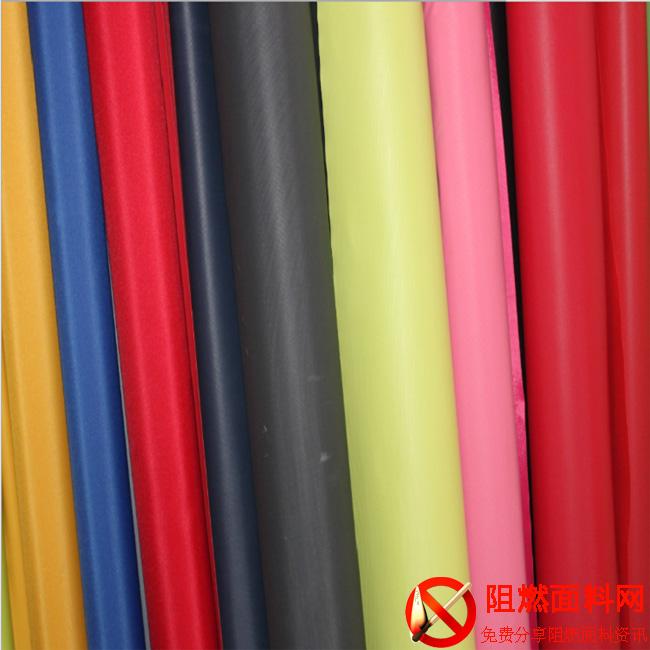Aramid carrier dyeing
Aramid carrier dyeing
Carrier dyeing is an important dyeing method for aramid. Under the condition of adjusting the temperature of the dye bath, the carrier is used to regulate the dynamic behavior of the fiber macromolecular chain, change the glass transition temperature of the fiber, weaken the intermolecular hydrogen bonding force, and provide a good foundation for the dye. Dyeing provides more space to promote the diffusion of dye molecules into the fiber and increase the dyeing rate.

Chen et al. studied the effect of carrier CindyeDnk on the dyeing rate constant and diffusion coefficient of disperse dyes on aramid. Research results show that the carrier can improve the affinity of disperse dyes to aramid, reduce dyeing entropy and shorten half-dyeing time. Xu Xiaofeng et al. used N,N-diethyl-m-methylbenzamide (DEET) emulsion as a carrier to increase the free volume of the fiber, improve the solubility of disperse dyes, and promote the incorporation of dyes into aramid 1313 and aramid 1414 The diffusion of the internal amorphous zone improves the dyeing performance of the two fibers. Although DEET reduces the glass transition temperature and orientation degree of aramid, it has no effect on its crystallinity. In addition, Zheng Dan et al. also studied the microstructure and properties of aramid 1414 after DEET treatment, further proving that DEET only caused the fiber molecular chain structure to loosen and did not destroy its crystallization area. Therefore, the dyed aramid 1414 still has excellent mechanical properties. Islam et al. used N-methylformanilide as a carrier to study the dyeing kinetics of aramid 1313 with basic dyes. Experimental results show that the carrier-swollen fiber has good performance, and the dyed aramid has good color fastness. Azam et al. used benzyl alcohol as a carrier for dyeing aramid 1313 disperse dye, taking full advantage of the small molecular size and high stability of benzyl alcohol to promote the penetration of dye molecules into the fiber and achieve color construction of aramid. Cao et al. studied the effect of 2-phenoxyethanol carrier on the aggregation structure and dyeing properties of aramid 1313 at low dye concentration. Research has found that the carrier has a strong hydrogen bonding effect with aramid, which can expand the amorphous area of the fiber, significantly improve the dyeing performance, and obtain brightly colored aramid. At the same time, this method also destroys the crystalline area of the fiber and reduces the thermal stability of the fiber. On the basis of this research, based on the principles of energy saving, emission reduction and reducing fiber damage during the dyeing process, Sheng et al. developed a method to pre-swell aramid 1313 with 2-phenoxyethanol carrier, achieving low-temperature (95°C) dyeing of aramid. This method makes full use of the two-phase system formed by the carrier and dye liquor, promotes the aggregation of cationic dyes into the carrier phase, and significantly improves the dyeing performance of aramid. It can be seen that researchers have carried out a lot of research work on the carrier dyeing of aramid, especially through the pre-regulation of the fiber molecular structure, low-temperature dyeing of aramid has been achieved. Fibers prepared by carrier dyeing have the advantages of bright colors and high color fastness. However, in this method, the removal of residual carriers inside the fibers, safe reuse of carriers and further reduction of the impact of carriers on the mechanical properties of the fibers need further study.
Aramid non-aqueous medium solvent dyeing

Appropriate non-aqueous solvents can regulate the morphology and structure of disperse dye aggregates and fiber aggregation, swell the fiber and promote the entry of dye molecules into the fiber, thereby improving the dyeing performance of the fiber.
Preston et al. used water-soluble pyridine solvent to dye aramid 1313. The dyed fiber has bright color and good light stability, while maintaining good mechanical properties and excellent light resistance. Based on the regulation of the aggregation morphology of dye molecules in solvents, Sheng et al. used N,N-dimethylacetamide (DMAc)/water solvent system to dye aramid and systematically studied the aggregation behavior of dyes in binary systems and their Its dyeing dynamics. Research results show that DMAc improves dyeing performance by regulating the zeta potential and particle size of dye aggregates. On this basis, Sheng et al. proposed a cation-based dyeing mechanism. In addition to acting as a hydrogen bond modulator, DMAc can also cooperate with sodium chloride to selectively destroy intermolecular hydrogen bonds of aramid macromolecules. During the dyeing process, the dye molecules and DMAc form cations [DMAc-Dye]+, which significantly improves the dyeing performance of aramid 1313, and the dyed fiber has good mechanical and thermal properties. Based on the concept of clean, green, and environmentally friendly manufacturing, Zheng et al. used supercritical carbon dioxide as a solvent instead of water to study the dyeing characteristics of aramid in supercritical carbon dioxide, and achieved the color construction of aramid with a variety of disperse dyes. This method has It has the advantages of high color fastness, short process flow, energy saving and environmental protection, but it has higher requirements for dyeing equipment. As an emerging non-aqueous medium, ionic liquids have also received widespread attention. Opwis et al. used 1-ethyl-3-methylimidazole ethyl sulfate ionic liquid to etch the surface of aramid fiber to improve its roughness, increase the adsorption sites for ionic dyes, and construct a high color fastness at room temperature. Aramid 1313. The above research work shows that non-aqueous medium solvent dyeing has the advantages of water saving and high color fastness. It can efficiently reuse non-aqueous medium and has unique advantages in the field of green and environmentally friendly dyeing.
Other dyeing methods
Using surface modification methods to control the surface structure of aramid fiber can also help improve dyeing performance. MainAs the pigment content increases, the K/S value of the fiber increases, and the color fastness ratings to dry and wet rubbing reach 5 and 4~5 respectively; however, the increase in pigment content will affect the continuity of the fiber macromolecular chain, causing The mechanical properties of colored fibers decrease.
Ultra-high molecular weight polyethylene fiber non-aqueous medium solvent dyeing
Based on the fact that supercritical carbon dioxide does not destroy the structure of organic compounds during the dyeing process, Ma et al. realized the dyeing of ultra-high molecular weight polyethylene fabrics using supercritical carbon dioxide as the medium. In a supercritical carbon dioxide environment, ultra-high molecular weight polyethylene fabrics were dyed at a pressure of 20MPa and a temperature of 120°C. As the dyeing time and dye dosage increased, the dyeing performance of the ultra-high molecular weight polyethylene fabrics increased; the dyed fabrics The color fastness to friction and sublimation reaches level 4~5.
Surface modification and dyeing of ultra-high molecular weight polyethylene fiber
Jia Dong et al. introduced hydrophilic groups and benzene ring structures by depositing polydopamine on the surface of ultra-high molecular weight polyethylene fibers to enhance the binding force between dye molecules and fibers. After surface modification, the dyeing performance of ultra-high molecular weight polyethylene fiber was significantly improved. After dyeing with reactive red 2, its K/S value reached 6.144. Enomoto et al. used methyl methacrylate, acrylic acid and styrene as monomers to perform radiation-induced graft modification on ultra-high molecular weight polyethylene fibers to improve their dyeing affinity. Research results show that within a certain range, the higher the grafting rate, the darker the color of the fiber. After dyeing with cationic dyes, its K/S value can reach 16.5, and the color is darker.
At present, in the construction process of ultra-high molecular weight polyethylene fiber color, it is of great significance to keep the mechanical properties of the fiber stable.
Conclusion
High-performance fibers represented by aramid, carbon fiber, polyimide fiber and ultra-high molecular weight polyethylene fiber are widely used in national defense technology, military engineering, aerospace, transportation, construction industry, and medical protection due to their excellent properties. and other important fields, but the single color of the product limits the further expansion of its application. In order to solve the problem that high-performance fibers are difficult to dye or dye deeply, the color construction methods mainly include chemical dyeing methods such as carrier dyeing, non-aqueous medium solvent dyeing, fiber surface modification dyeing, dope dyeing, and physical structure color generation methods. Based on the current status of high-performance fiber color construction technology, promoting energy-saving, low-carbon, green and environmentally friendly dyeing, strengthening clean and safe production, and assisting the high-quality development of the textile industry will become the main development trends in the future. At the same time, it is necessary to further strengthen the theoretical basic research on the color construction of high-performance fibers, combine the macromolecular chains, chemical structures, forming methods, surface physical and chemical properties of high-performance fibers, and achieve theoretical breakthroughs in the color construction of high-performance fibers, which will provide the basis for the preparation of high-performance fibers. Colored high-performance fibers provide principle innovation and theoretical guidance. In addition, improving the dyeing depth and color fastness of fibers, reducing structural damage during the color construction process of high-performance fibers, and maintaining high mechanical properties of fibers are also urgent issues that need to be solved. Balancing the relationship between the color construction technology and fiber properties of high-performance fibers in research will promote the high-quality development and application expansion of high-performance fibers and their products.







